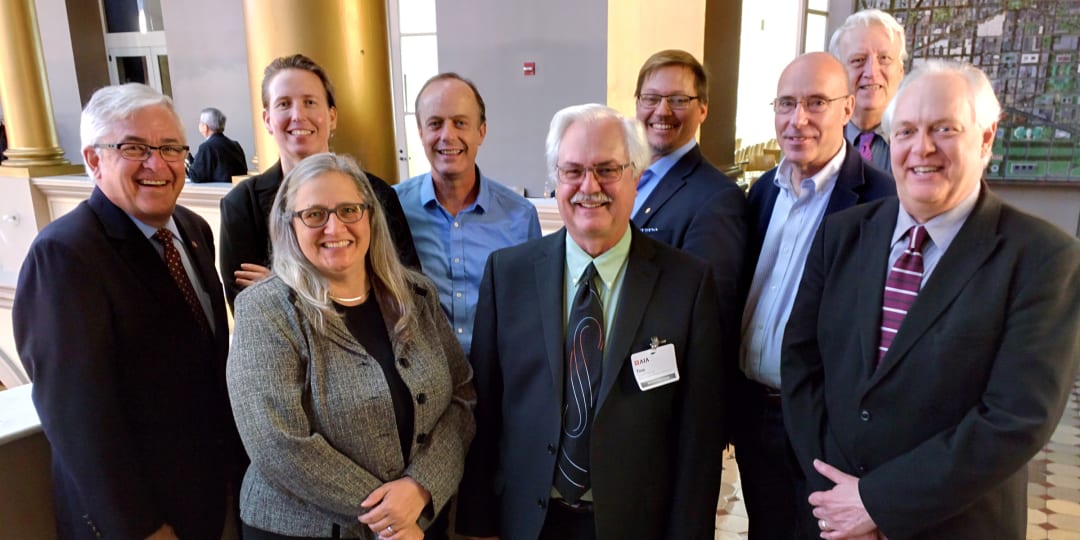Reframing resilience: Proceedings of the AIA 2015 Resilience Summit

“We have all experienced the effects of climate change ... As those that work in the built environment, both in the private sector as well as government, we have a particularly urgent stake in it—because we can do something about it.” —Abigail Gorman, MBA, AIA Chief of Staff
About Reframing Resilience
What makes a community “resilient”? What are the primary threats our communities need to be resilient against, and how do those differ by geography, income, size, or economy? Perhaps most important, who is responsible for creating—and maintaining—resilience at the community level, and how does one community learn from another?
To tackle these questions and more, the American Institute of Architects (AIA) convened leaders representing architecture, engineering, and construction, as well as government agencies, scientists, policy experts, and the insurance industry at its inaugural 2015 Resilience Summit.
AIA members, industry partners, and government allies will find that the summit revealed existing barriers to resilience, policy recommendations, and partnership opportunities to advance resilience goals.
The summit built upon AIA’s current work in defining, designing, and promoting resilient communities. This work runs the gamut, encompassing our Sustainability Strategic Initiative; the position statement on resilience and the Building Industry Statement on Resilience AIA helped to craft; targeted work in energy, materials, resilience, and health as they relate to the built environment; and longstanding initiatives such as the Disaster Assistance program and the work of the Center for Communities by Design.

Architects shared their experience in advancing community resilience.
In two provocative sessions, Policies + Practices for Positive Change and Resilience Indicators for Long Term Sustainability, six architects with diverse backgrounds in design, insurance, education, and civic leadership shared their expertise in addressing hazards and climate threats. Critical to the conversation was analyzing the notion of resilience itself, and the inherent interconnections the concept evokes.
For instance, one can build a robust structure—but if that resilient building is situated in a non-resilient community, what has been achieved? Site selection, infrastructure, availability of natural resources, and community services are all critical to a building’s performance and functionality before and after a disaster. The panel experts also reframed the value of resilient building as future cost avoidance: reinforcing a benefit-cost analysis over the service life of the building.
Other key discussions included strategies to enhance hazard mitigation and climate adaptation, including municipal resilience plans, revisions to model building codes, and the development of professional design guidance.
Perhaps most consequential, a series of common themes began to emerge through the discussions:
- Industry partnerships are needed to tackle complex design problems at scales of efficiency to achieve greater cost benefits.
- Experienced professionals need to continuously re-educate the profession about disaster prevention and resilience, and provide awareness and hope to the public.
- Existing policies, tools, and programs must be coordinated at the state and federal levels to resolve contradictions, identify opportunities and synergies, and fill gaps.
- Greater collaboration across the building industry with the public’s participation is needed to align community performance goals and to determine design thresholds.
These themes demonstrate the challenge that is before us, but also provide a clear road map for moving forward. With a shared vision and deliberate action, the building industry can make strides towards a more resilient tomorrow.
Image credits

Courtesy of the AIA
